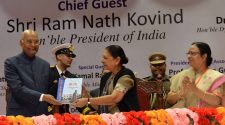Culture of a clan is based on the rituals followed in the clan and one such great ritual is marriage. The culture of a community or language clan could be very easily identified if one could attend their marriage and check out all the proceedings they follow during the marriage. Indian culture has always involved grandiose traditions, religious depiction and social values insisting unity. The colours and art in a culture could widely be seen during the festival times. Marathi people live, majorly in Maharashtra, which is the third largest state in India, and has the second largest population in India. It has varied customs and traditions yet the culture of the Marathi people have not changed or deteriorated over time. However, there were many traditions changed to accommodate the new fashions.
Marathi Culture Attire
Maharashtra is a colourful state and Marathi language is a colourful language. This directly depicts in the people’s daily attire. Women wear colourful choli and sari. For usual occasions, elderly women wear colourful braided saris and youngsters mostly wear choli embroidered and studded with false gems. Men wear dhotis and phetas. Now as the whole India changes into fashion of the western world dominating every inch of this nation, it was the Marathi people who tried to accommodate the western fashion and yet follow the Marathi culture and tradition. Lot of people have incorporated the western fashion with their trend colours.
Marathi Culture Dance
The youth and soul of music has always given a placid feel to individuals. The delight of Marathi music apart from giving placid feeling, it also gives rejoice and intelligence in adding intelligible words to the rhythm. They sound great along with the visual effects of dance like Povada and Koli. Lavani is also another famous dance form. Apart from such formal way of dances, every state will have its native culture that is informal. People who are in villages make dance moves just out of fascination towards the Marathi music and such songs are called as folk songs. Some of the responsive folk dances include the Dhangri Gaja and Tamasha. Dindi and Kala are also great folk dance forms of the past and present.
Marathi culture is now disguised more into regional culture. It is present with a mixture of state cultures into them. Among the several variations of Marathi culture, Maharashtra culture is the most renounced and it is the best, which is inclined more towards Marathi culture. Marathi culture is more include toward tradition.










